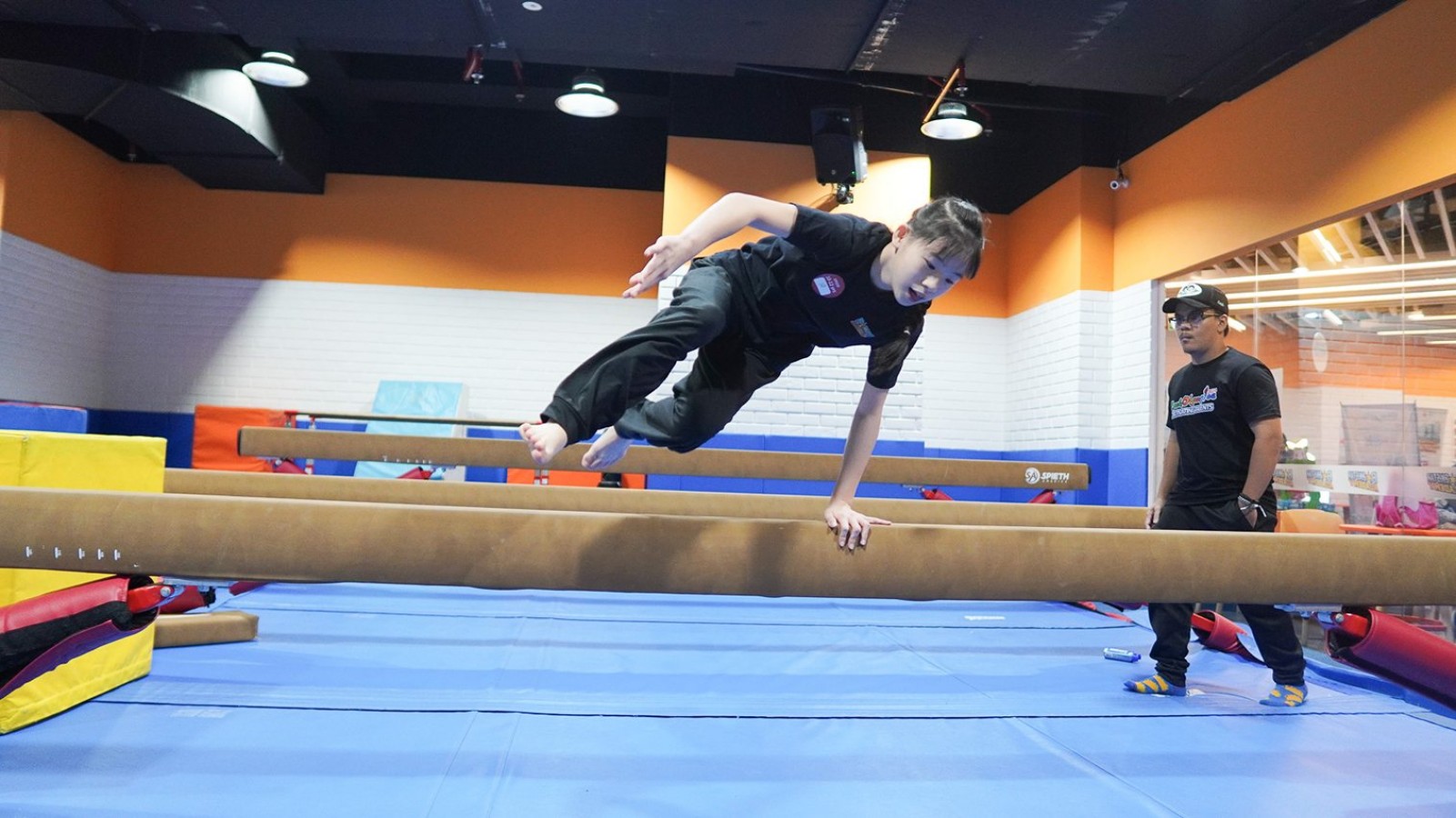Learn How to Do Parkour Vault Properly and Safely

One of the essential skills in parkour is vaulting. Vaulting involves leaping over obstacles using your hands and feet, and it is not only a fundamental technique but also an expressive element of parkour.
In this article, we'll dive into the world of parkour vaults, exploring what they are, different types of vaults, and how to perform them properly and safely.
What is Vaulting?
Vaulting in parkour is a technique used to overcome obstacles quickly and efficiently. It involves using your hands to support your body while your legs pass over the obstacle. Vaults are versatile and can be adapted to various obstacles and environments, making them a crucial skill for any traceur (parkour practitioner).
Vaulting requires a blend of strength, agility, and timing. Proper technique and safety precautions are vital to avoid injury and ensure a smooth and fluid movement.
Types of Parkour Vaults
There are numerous types of vaults in parkour, each with its own unique approach and application. Here are some of the most common vaults:
1. Safety Vault
The safety vault is often the first vault learned by beginners due to its simplicity and low risk. It's a basic technique that doesn't require much speed or momentum to get over regular obstacles.
This vault is great for when you don't feel confident using other vaults to get over something. As the name suggests, it helps you safely reach the other side.
How to Do It:
- Find a simple obstacle about waist height, like a handrail or a ledge, where you can comfortably place your foot and hand to lift yourself over.
- Ensure there's enough space on the other side for you to land as you practice the safety vault.
- Approach the obstacle at a moderate speed.
- Place your lead hand on the obstacle.
- Lift your opposite leg over the obstacle while your trailing leg follows.
- Use your lead hand to guide your body over, maintaining balance and control.
- Land softly on the other side with both feet.
2. Speed Vault
The speed vault is designed for quickly passing over an obstacle without breaking stride. It is a parkour move used to quickly and smoothly get over low to medium obstacles while running. You can use it when coming straight at an obstacle or from an angle (which is called a lazy vault).
How to Do It:
- Approach the obstacle at a running speed.
- Place one hand on the obstacle.
- Swing your legs to the side, keeping them together.
- Use your hand to guide your body over the obstacle.
- Continue running without stopping.
3. Reverse Vault
The reverse vault, also known as the 360 vault or barrel vault, involves spinning over an obstacle. For practice, pick an obstacle with a flat surface so your hand can rest securely.
Here’s how to do it:
- Run towards an obstacle at a steady speed.
- Choose an obstacle that you can comfortably get over to practice.
- The more controlled your approach, the more controlled your spin will be.
- If you run too fast, you might spin too much and land poorly.
- Place the hand opposite to the direction you want to spin on the obstacle. For example, if you want to spin to the right, place your left hand on the obstacle.
- If you want to spin to the left, place your right hand on it. Start with your stronger hand (usually your dominant hand) until you get the hang of it, then practice in both directions.
- Jump forward with both feet and tuck your legs up.
- At the same time, put your hand on the obstacle and jump forward, bringing your knees toward your chest.
- This needs to happen quickly, so practice on an easy obstacle at a slow pace until you master the movements.
- Spin 360 degrees in the air over the obstacle and land on both feet. Let your momentum carry you around as you fly over the obstacle.
- Bring your legs down and look straight ahead as you reach the other side. Land on both feet and continue running.
4. Dash Vault
The dash vault combines a hurdle jump with a kick-out motion, allowing you to clear the obstacle while facing forward.
How to Do It:
- Run towards the obstacle.
- Jump and extend your legs in front of you.
- Place your hands on the obstacle as your legs pass over.
- Push off with your hands, completing the vault.
- Land on your feet and continue moving forward.
Tips on Performing Vaults Safely
In learning new parkour tricks, you have to practice them safely. Here are some general safety tips to keep in mind:
1. Warm-Up
Always warm up before practicing vaults. A good warm-up includes dynamic stretches, joint rotations, and light cardio to prepare your muscles and joints for the physical activity.
2. Progress Gradually
Start with basic vaults and low obstacles. As you become more comfortable and confident, gradually progress to more advanced vaults and higher obstacles.
3. Use Proper Equipment
When starting, use mats and soft surfaces to cushion falls. Wearing protective gear such as wrist guards and knee pads can also prevent injuries.
4. Practice Technique
Focus on mastering the technique before attempting vaults at full speed or on challenging obstacles. Proper hand placement, body positioning, and timing are crucial for successful and safe vaults.
5. Stay Aware
Always be aware of your surroundings and the condition of the obstacles you're vaulting over. Check for stability and potential hazards before attempting a vault.
6. Listen to Your Body
If you're feeling fatigued or experiencing pain, take a break. Pushing through discomfort can lead to injuries. Ensure you get adequate rest and recovery.
Which Vault You Are Going to Try First?
Mastering parkour vaults properly and safely is a vital aspect of parkour practice, allowing you to navigate obstacles efficiently and with confidence. If your children are interested in learning parkour, consider enrolling them in the Parkour program at Rockstar Academy.
Parkour involves traversing obstacles in man-made or natural environments using running, vaulting, jumping, climbing, rolling, and other movements to travel from one point to another as quickly and efficiently as possible.
By joining our classes, they will also have the opportunity to compete in exciting events like the RockOlympics, offering an amazing learning experience that helps students discover their true potential. You can even experience the parkour class beforehand by signing up for our free trial class!

FAQ
How long does it take to learn a parkour vault?
The time it takes to learn a parkour vault varies depending on the individual's fitness level, coordination, and practice frequency. With consistent practice, beginners can typically learn basic vaults like the safety vault within a few weeks.
Can anyone learn parkour vaults, or is it only for athletes?
Anyone can learn parkour vaults with the right training and dedication. While a certain level of physical fitness is beneficial, parkour is accessible to people of all ages and skill levels.
What should I wear when practicing parkour vaults?
Wear comfortable, athletic clothing that allows for a full range of motion. Good quality athletic shoes with proper grip are essential for safety and performance. Consider wearing protective gear like wrist guards and knee pads, especially when starting.
What are some common mistakes to avoid when learning vaults?
Common mistakes include poor hand placement, lack of body control, and rushing through the movement. It's essential to practice slowly and focus on technique to avoid these mistakes.
How can I overcome the fear of attempting a new vault?
Overcoming fear involves building confidence through gradual progressions. Start with small, low-risk obstacles and practice consistently. Visualization and mental preparation can also help. Working with a coach or experienced traceur can provide guidance and support.



